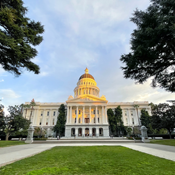
Research and Statistics for Sales and Use Tax
In the course of administering California's state, local, and district sales and use tax programs, the CDTFA compiles information ranging from taxable sales data, revenue allocations to local cities, counties, and special districts to sales tax rates.
Tax Rates
Current sales tax rates
To find information about the latest sales tax rates, see California City & County Sales & Use Tax Rates
Historical sales tax rates
To view a history of the statewide sales and use tax rate, please go to the History of Statewide Sales & Use Tax Rates page.
To find historical tax rates in cities and counties, please go to the Historical Tax Rates in California Cities and Counties page.
To view a history of tax rates in counties, cities, and special districts, see Historical Tax Rates by Jurisdiction.
Sales and Use Tax Rates, by County, as of July 1
This table shows the total combined state, local, and special district tax rates for each county, and the cities within a county that impose a special district tax. See Table 23.
Local Sales and Use Tax Rates Imposed by California Cities on July 1
Under the Bradley-Burns Uniform Local Sales and Use Tax Law, a city's local tax may be imposed up to one percent; the city's tax rate is credited against the county's one percent tax. This table shows the city-imposed Bradley-Burns local sales tax rates on July 1. See Table 23.
Revenues
Summary of Revenues from Taxes Administered by the California Department of Tax and Fee Administration
This table provides a 10-year historical summary of revenues by source of revenue. See Table 1.
State Sales and Use Tax Collections and Number of Permits
This historical table shows state sales and use tax collections from the General Fund tax rate by fiscal year and the number of outstanding permits as of December 31. See Table 18.
Allocations to Cities, Counties, and Special Districts
The CDTFA administers local taxes under the Bradley-Burns Uniform Local Sales and Use Tax Law and district taxes under the Transactions and Use Tax Law, which are divisions of the Revenue and Taxation Code. For more information, see our Tax Guide for Local Jurisdictions and Districts webpage.
Monthly Reports
In order to ensure a steady cashflow to local governments, the CDTFA distributes these funds on a monthly basis.
To find information for a city, county, or special district for the latest month, please go to the Local Jurisdiction Statement of Tax Distribution page.
Payments
- Payments to Cities and Counties from the 1% Local Sales and Use Tax Funds
- Payments to County Transportation Funds from the 1/4% Local Sales and Use Tax
- Payments to Special Districts from the Transactions (Sales) and Use Taxes
- Payments to Redevelopment Agencies from the 1% Local Sales and Use Tax Funds
Quarterly Reports
The allocations to local governments are reconciled on a quarterly basis.
To view the quarterly distribution reports, please visit our Tax Guide for Local Jurisdictions and Districts webpage.
Annual Report Tables: Sales and Use Taxes
Local Sales Tax Distributions (Bradley-Burns)
"Local Tax" is the general term for sales and use taxes imposed under the Bradley-Burns Uniform Sales and Use Tax Law. The Board began to administer the Bradley-Burns Local Sales and Use Tax Law effective April 1, 1956, at a rate of 1 percent. The law provided for local option and thus it was not adopted by all cities and counties until January 1, 1962.
Revenues Distributed to Cities and Counties from Local Sales and Use Taxes
This table shows the Bradley-Burns local sales and use tax revenue collected and allocated to California cities and counties during a fiscal year. See Table 21A.
Revenues Distributed to Counties from County Transportation Tax
This table shows the county transportation tax revenue collected and allocated to each California County during a fiscal year. See Table 21B.
District Taxes Distributions
"District Taxes" are imposed locally under the Transactions and Use Tax Law. The first district tax went into effect April 1, 1970.
Revenues Distributed to Special Districts from Transactions and Use Taxes
This table shows the tax rate, the effective dates, and the transactions and use tax revenue collected and allocated to each special district during a fiscal year. See Table 21C.
Special District Tax Distributions and Administrative Charges
This historical table shows the transactions and use tax revenues allocated to special districts and the associated administrative charges by fiscal year. See Table 22B.
State-Local Sales Tax Apportionments
The state sales and use tax funds that are distributed to California cities and counties by the State Controller (SCO) are the Local Public Safety Fund, the Local Revenue Fund, and the Local Revenue Fund 2011.
For example, information on the monthly half-percent sales tax for public safety (Prop. 172) can be found in the Payments section.
Taxable Sales in California
Taxable Sales in California is a quarterly report on retail sales activity in California, as measured by transactions subject to sales and use tax. The report includes data about statewide taxable sales by type of business as well as data about taxable sales in all California cities and counties.
To find taxable sales information, please go to the Open Data Portal for Taxable Sales in California.
